The Beginning of Everything
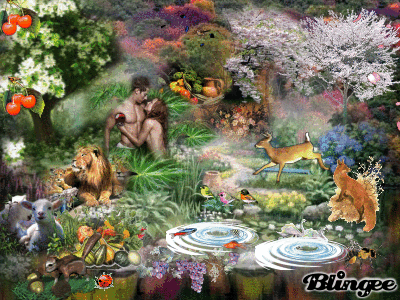
The Earliest Reference to Creation
In the beginning was the Word, and the Word was with God, and the Word was God.
He was with God in the beginning.
3 Through him all things were made; without him nothing was made that has been made.
4 In him was life, and that life was the light of all mankind.
5 The light shines in the darkness, and the darkness has not overcome it.
(John 1:1-4)
The Opening Verses of Genesis came Later
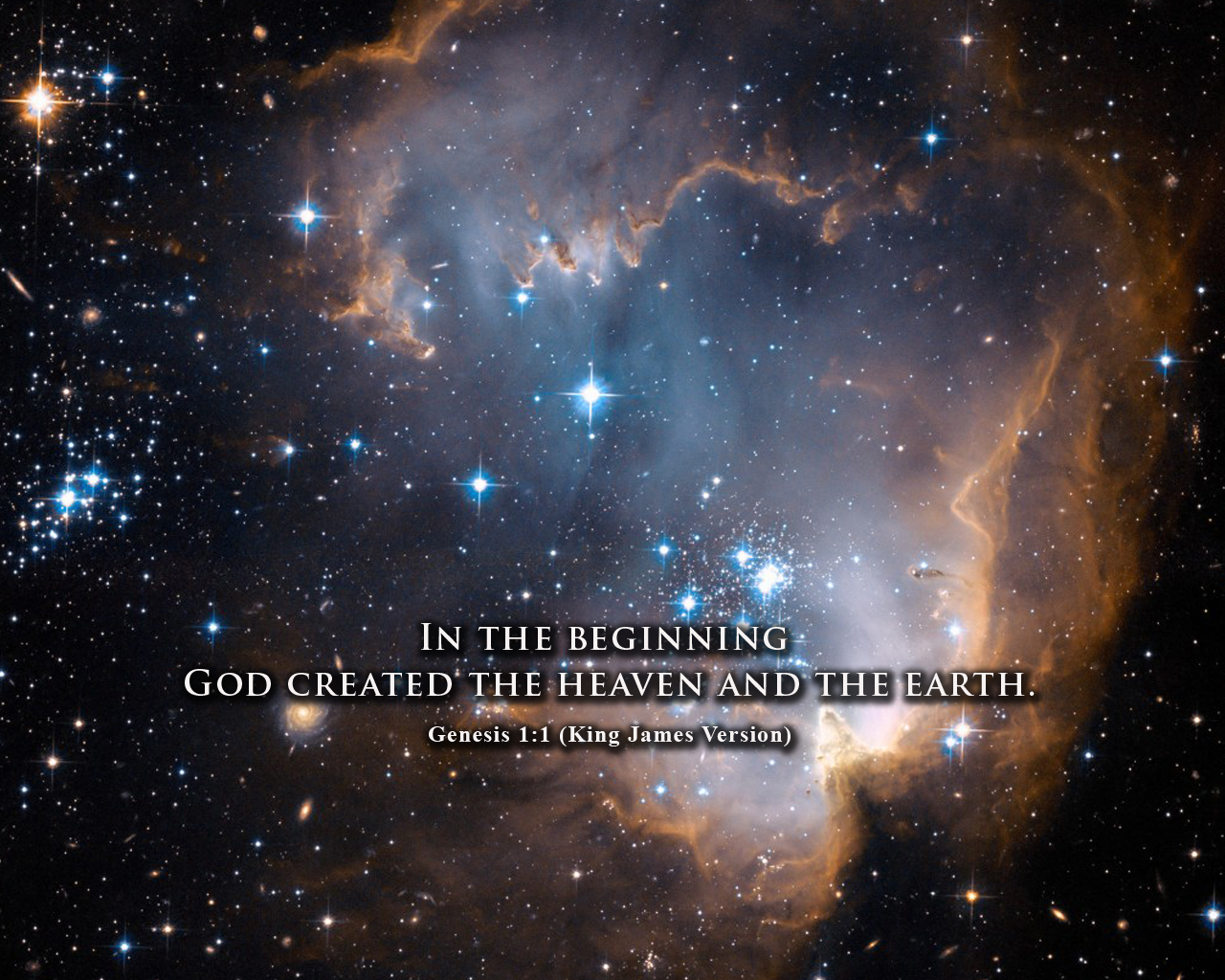
The first Chapter of Genesis properly ends in the middle of verse four of Chapter two.
If the text of Genesis One is broken up into subsections it is easy to see the activity of God step by step in the creative work of the seven days of creation. There is a sequence f events which suggests a flow of "prototime," though there are no clocks at that time.
Genesis 1:1 In the beginning [bersehith] God created [bara] the heavens [shamayim] and the earth [eretz].
2 The earth was without form and void [tohu waw bohu], and darkness was upon the face of the deep [tehom]; and the Spirit of God was moving [rachaph] over the face [paniym] of the waters [mayim].
3 And God said, "Let there be [hayah, from the verb "to be"] light"; *and there was light.*
4 And God saw [ra'ah] that the light was good [towb]; and God separated [badal] the light from the darkness.
5 God called [qara'] the light Day, and the darkness he called Night. And there was evening and there was morning, one day.
Action verbs abound in Genesis One! God's first action was to bring into existence the dual realms called "the heavens and the earth." This is another way of saying, "In the beginning God created space, time and matter." In my opinion, Genesis 1:1 is not an introduction, nor is it a summary---as some commentators have suggested. Immediately it is clear that God's work in creation will be to make an invisible realm (called in the New Testament "the heavenly places"), plus a material universe. "Heavens" is plural in verse one indicating (a) the lower atmosphere, (b) the stellar heavens, and (c) the "third heaven" where God dwells, (2 Corinthians 12:2).
The Observer present during creation week appears to be observing from the earth. This point of view gives rise to various models of Geocentricity. That is, our planet is the true center of the universe. See Absolute Geocentricity.
Eretz is a common Hebrew word often meaning "land" ---as in "eretz yisrael," "the land of Israel." Here eretz evidently refers to all forms of matter. Having created space, time, and matter the Observer (God himself) notes that the universe is as yet "unformed and unfilled." "Tohu wabohu" can mean chaotic or wasted, and is so used elsewhere in the Old Testament. But, regarding the use of the term in Genesis One, the leading Hebrew scholar H.C. Leupold says, "Both terms together then indicate two directions in regard to which the newly created world will undergo further changes: first, it must be shaped and formed into definite molds; secondly it must be peopled with all kinds of inhabitants or beings" (Exposition of Genesis, Baker Books, 1942, pp. 46-47).
In Isaiah 45:18 God tells us that his purpose in creating the universe was that it should not be left in an unfinished state:
For thus says the LORD, who created the heavens (he is God!), who formed the earth and made it (he established it; he did not create it a chaos, he formed it to be inhabited!): "I am the LORD, and there is no other.
Parenthetically we are told that immediately after the opening statement of 1:1 and 1:2 that the Third Person of the Trinity, the Spirit of God was present, and was hovering, or moving over the "face" of the waters. Here we have a hint of the role of the Spirit in creation, shaping and forming, imparting life, and energizing the creation. The same word translated "brooding" is later used to describe a mother eagle brooding over her young chicks, (Deuteronomy 32:11). This suggests the personal, loving, caring, nurturing characteristics of the Spirit.
We can infer from other passages of the Bible that the design of the universe originated in the Mind of God the Father. In Genesis when we encounter the expression "God said" we have a reference to the activity of the Son of God who spoke the universe into existence by a series of commands in response to the Father's wishes. The term "God said" occurs ten times in Genesis One (verses 3, 6, 9, 11, 14, 20, 24, 26, 28, and 29).
The second of God's creative actions was the command "Let there be light." As with all of God's commands when He speaks to nature or to the void, the response is instantaneous, "And there was light." The expression "Let there be..." occurs 15 times in Genesis 1.
There is great mystery here in the creation of light (photons) since the New Testament teaches that God Himself is Light. God is not the Father of Photons!
This is the message we have heard from him and proclaim to you, that God is light and in him is no darkness at all. (I John 1:5)
Paul speaks of God as dwelling in "unapproachable light,"
I charge you to keep the commandment unstained and free from reproach until the appearing of our Lord Jesus Christ, and this will be made manifest at the proper time by the blessed and only Sovereign, the King of kings and Lord of lords, who alone has immortality and dwells in unapproachable light, whom no man has ever seen or can see. To him be honor and eternal dominion. Amen.
Evidently God is veiled constantly from our sight by clouds of thick darkness.
"The LORD has set the sun in the heavens, but has said that he would dwell in thick darkness." (I Kings 8:12)
Some have suggested that the light brought forth on command on Day One was direct spiritual light from God Himself. However, I believe the command "Let there be light" resulted in the creation of energy in the form of photons of all possible energy levels. "Light" was then the fourth working substance---along with space, time and matter---from which the Lord would mold and craft the universe. Matter and energy are today known to be equivalent, however it is reasonable that God's raw material for the subsequent stages of construction of the universe consisted of atomic elements as building blocks, as well as a reservoir of universal energy which would be modified and placed, for example, into the sun and stars on Day Four. James 1:4 calls God the "Father of the lights" referring to the stars.
The earth may or may not have been formed as a rotating sphere on Day One. However in some way we probably can not now grasp or adequately describe, light and darkness were divided on Day One by some kind of barrier. Job Chapter 38 offers further clues.
"Naming" in Genesis indicates that God pauses to assign attributes to various entities, such as Night and Day and so on. Later He will personally teach Adam the meaning of things, and Adam will, in turn, be given the job of analyzing and naming the animals.
The Days of creation begin in the evening and move to morning, as does the present custom of marking days in the Jewish culture.
6 And God said, "Let there be a firmament [raqiya`] in the midst of the waters, and let it separate the waters from the waters."
7 And God made [`asah] the firmament and separated the waters which were under the firmament from the waters which were above the firmament. *And it was so.*
8 And God called the firmament Heaven. And there was evening and there was morning, a second day.
The Second Day of creation involves two main activities b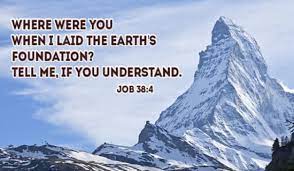 y God. A boundary, here called a "firmament," is established in the midst of the previously undivided "waters" (plural). The Hebrew word raqiya means "to stretch out"---as one stretches out a tent. There is a wide range of opinion about what this term does or does not mean. Traditional commentators have suggested that God moved the boundary zone He had placed in the waters, expanding some of the waters out to the vast reaches of space. In doing this, some of the waters could easily have ended up in the lowest level of the heavens, namely in the upper atmosphere, to form a vapor canopy---which is thought to have collapsed at the time of the Flood. Much of the primeval water could have been pushed out to the outer boundaries of the universe. Our English word "heaven" is from the verb "to heave" which preserves the concept of an original expansion of the universe early on in creation week.
y God. A boundary, here called a "firmament," is established in the midst of the previously undivided "waters" (plural). The Hebrew word raqiya means "to stretch out"---as one stretches out a tent. There is a wide range of opinion about what this term does or does not mean. Traditional commentators have suggested that God moved the boundary zone He had placed in the waters, expanding some of the waters out to the vast reaches of space. In doing this, some of the waters could easily have ended up in the lowest level of the heavens, namely in the upper atmosphere, to form a vapor canopy---which is thought to have collapsed at the time of the Flood. Much of the primeval water could have been pushed out to the outer boundaries of the universe. Our English word "heaven" is from the verb "to heave" which preserves the concept of an original expansion of the universe early on in creation week.
Big Bang cosmology suggests the universe began with a burst of light which condensed into matter. The whole universe is thought to still be expanding according to this hypothesis. It is more likely that the universe was stretched out to its maximum diameter on Day Two and has remained static ever since. Initial stretching out of space would have involved the step-input of a large amount of energy. However after Day Two the universe was static, i.e., not expanding further. If this is the case, one must look for alternate explanations for the red-shift of light from distant galaxies. (See abstracts on other cosmologies and papers on the constancy of the speed of light and possible consequences. Also see The Origin of the Solar System).
9 And God said, "Let the waters under the heavens be gathered together into one place, and let the dry land appear."*And it was so.*
10 God called the dry land Earth, and the waters that were gathered together he called Seas [yam]. And God saw that it was good.
11 And God said, "Let the earth put forth vegetation, plants yielding seed, and fruit trees bearing fruit in which is their seed, each according to its kind [miyn], upon the earth." *And it was so.*
12 The earth brought forth vegetation, plants yielding seed according to their own kinds, and trees bearing fruit in which is their seed, each according to its kind. And God saw that it was good.
13 And there was evening and there was morning, a third day.
The idea that dry land was originally brought forth out of the waters is taken for granted in the Apostle Peter's explanation of the earth as it was created and as it existed prior to the Flood, (2 Peter 3). Psalm 104, a hymn to the Creator and Sustainer of the universe, infers the same thing. The earth did not begin in a molten state as commonly portrayed in older school books. Recent texts more commonly depict the formation of the earth as a cooler process (see Concerning the Early History of the Earth).
The separation of dry land from water and the creation of an atmosphere has put in place a habitat, an environment which can support life. By command, the Son of God then spoke into existence various forms of plant life, each "kind" equipped with its own unique genetic coding information which allows replication of the original forms. Evidently the programming code contains a great deal of redundancy---allowing tremendous variation and adaptation within each kind. (See The Complexity of the Genetic Code).
14 And God said, "Let there be lights in the firmament of the heavens to separate the day from the night; and let them be for signs ['owt] and for seasons [mow`ed ] and for days [yom] and years [shaneh],
15 and let them be lights in the firmament of the heavens to give light upon the earth." *And it was so.*
16 And God made [`asah] the two great lights, the greater light to rule [mashal] the day, and the lesser light to rule the night; he made the stars also.
17 And God set [nathan = to set or appoint] them in the firmament of the heavens to give light upon the earth,
18 to rule over the day and over the night, and to separate the light from the darkness. And God saw that it was good.
19 And there was evening and there was morning, a fourth day.
The Fourth Day corresponds to Day One. Light (or) was created on the first day. Now on Day Four we have the creation of the "light-holders" (ma'or). God has previously established a fundamental boundary layer between Night and Day. Now this boundary layer is sculpted and assigned to the sun, moon, stars, and planets. Thus the length of the Day in earth's history was established as the time it takes for one rotation of the earth on its axis.
Furthermore, the stars and their order (establishing the constellations), the movement of the earth around the sun, and the earth's relationship with other planets, meteors, comets and asteroids were all assigned the task of measuring those events which would be of significance to earth's inhabitants. The "clock" used in counting time in the Bible---the motion of sun, moon, earth and starts, relies on Newton's Law of Gravity and is commonly called "dynamical time."
It has been often noted by commentators that the sun is a wonderful symbol of Jesus Christ, the Sun of Righteousness, and the Moon, a picture of the church. The church rules the earth during the visible absence of her Lord, but she shines not by her own light source, but only by reflecting the greater light of Christ. The second coming of Christ will banish the present darkness of our world and bring the Light of Life to all mankind.
20 And God said, "Let the waters bring forth swarms [sharats = bring forth abundantly] of living creatures, and let birds fly above the earth across the firmament of the heavens."
21 So God created [bara] the great sea monsters and every living creature [nephesh] that moves, with which the waters swarm, according to their kinds, and every winged bird according to its kind. And God saw that it was good.
22 And God blessed them, saying, "Be fruitful and multiply and fill the waters in the seas, and let birds multiply on the earth.
23 And there was evening and there was morning, a fifth day.
Day Five corresponds to Day Two. Having stretched out the heavens to form an atmosphere and having formed the Seas---on Day Two, the Creator filled the lower heavens with birds and flying creatures, and the seas with fishes and other aquatic animals. Some of the higher forms of animal life are described as being nephesh, that is as having souls, as does man. The animals are charged with being fruitful and multiplying according to their implanted genetic programming.
24 And God said, "Let the earth bring forth living creatures according to their kinds: cattle and creeping things and beasts of the earth according to their kinds." *And it was so.*
25 And God made the beasts of the earth according to their kinds and the cattle according to their kinds, and everything that creeps upon the ground according to its kind. And God saw that it was good.
26 Then God said, "Let us make man in our image, after our likeness; and let them have dominion over the fish of the sea, and over the birds of the air, and over the cattle, and over all the earth, and over every creeping thing that creeps upon the earth."
27 So God created [bara] man in his own image, in the image of God he created him; male and female he created them.
28 And God blessed them, and God said to them, "Be fruitful and multiply, and fill the earth and subdue it; and have dominion over the fish of the sea and over the birds of the air and over every living thing that moves upon the earth."
29 And God said, "Behold, I have given you every plant yielding seed which is upon the face of all the earth, and every tree with seed in its fruit; you shall have them for food. 30 And to every beast of the earth, and to every bird of the air, and to everything that creeps on the earth, everything that has the breath of life, I have given every green plant for food." *And it was so.*
31 And God saw everything that he had made, and behold, it was very good. And there was evening and there was morning, a sixth day.
The Sixth Day is full of activity! The higher forms of animal life are brought into being and man is created. The Persons of the godhead---having counseled together---undertake the creation [bara] of man as Adam/Eve. The details of this work are amplified in Adam's account of creation---Adam's diary---which commences in Chapter 2:4b. (See Made in the Image of God) In this second chapter of Genesis, man is commanded to be fruitful and to assume stewardship over creation, but he soon forfeits this role. It will take the work of Jesus Christ, the Second Adam, to restore man to his rightful place as master over creation on God's behalf. (See Hebrews Chapter 2:5ff).
Genesis 2:1 Thus the heavens and the earth were finished, and all the host [tsaba'] of them.
2:2 And on the seventh day God finished [kalah = completed] his work which he had done, and he rested on the seventh day from all his work which he had done.
3 So God blessed the seventh day and hallowed it, because on it God rested from all his work which he had done in creation.
2"3 And God blessed [barak] the seventh day, and sanctified [qadash] it: because that in it he had rested [shabath ] from all his work [melakah ] which God created [bara] and made ['asah].
4 These are the generations of the heavens and the earth when they were created. (Genesis 1:1-2:4a).
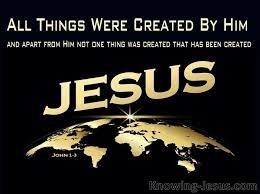
Jesus Before Genesis One
...24 “Father, I desire that they also whom You gave Me may be with Me where I am,
that they may behold My glory which You have given Me; for You loved Me before the foundation of the world. |
25 O righteous Father! The world has not known You, but I have known You; and these have known that You sent Me.
26 And I have declared to them Your name, and will declare it,
that the love with which You loved Me may be in them, and I in them.” (John 17)

"Man will occasionally stumble over the truth, but most of the time he will pick himself up and continue."---Winston Churchill

The Age of the Universe: Old But Not Old
Suppose we could walk (or drive) back in time from, the present to the point of orign. Population stastics since the time of Christ are well known. Dates BC are mostly theoretical.
Based on the Bible, Tom Pickett's conclusions are quite reasonable. He has added in known history to the Flood and then, probable population from the of time of Adam to the Flood.He shows the probable population back to Adam. In our time-travel car let's drive back in history from the present back to the time of Adam.
If we wanted to know hisory before Adam, traveling even further into the observable past.from Adam's arrival on the scene--we'd find a major discontinuity.We run into a sign "Under Construction." The discontinuity reveals a transition from our present clocks to another time dimension. rom His console, our God see our past, present, and future as "now."
For thus says the high and lofty One who inhabits eternity, whose name is Holy:
"I dwell in the high and holy place, with him also who is of a contrite and humble spirit,
to revive the spirit of the humble, and to revive the heart of the contrite."
Genesis 1:1 seems to cover this "time" interval.
1:1 In the beginning God created the heavens and the earth.
"Creaion in Seven Days" is evidently a template for history as described below.
Intimidated perhaps by modern science, many Christians today have
assumed that Genesis One is figurative or poetic in its language,
when in fact the Hebrew is not poetry but precise prose, and it
is indeed packed full of detail. The opening chapters of the Bible
might be likened to a modern computer software program which comes
to us on diske>tte in a compressed format. We must unzip or unpack
the opening chapters of Genesis as we would a computer program
before we can understand all the content.
One of the important interpretative principles in understanding
the whole Bible is what is known as the "Law of First Occurrence."
This means that the first use of a symbol, the first mention of
a topic or event in the Bible deserves special attention. One
example would be the "first murder"---Cain's slaying
of his brother Abel. Were we interested in understanding all the
Bible had to say about the subject of killing and murder, the
account of Cain and Abel is where the foundation is laid for all
that follows on the subject.
It is a general rule of Bible interpretation that one uses
scripture to interpret scripture. The books of the Bible are always
consistent with each other. The meaning of symbols does not change
from Genesis through Revelation. God's revelation of Himself (and
about everything else as well) is progressive down through history.
There is no one book of the Bible that tells us all we want to
know about a subject (such as creation). We must first study the
whole Bible and then we can look at various subjects and gain
a good understanding.
The well known "Golden Rule of Interpretation" states: "When the plain sense of Scripture
makes common sense, seek no other sense; therefore, take every word at its primary,
ordinary, usual, literal meaning unless the facts of the immediate context, studied in the light of related passages and axiomatic and fundamental truths, indicate clearly otherwise."
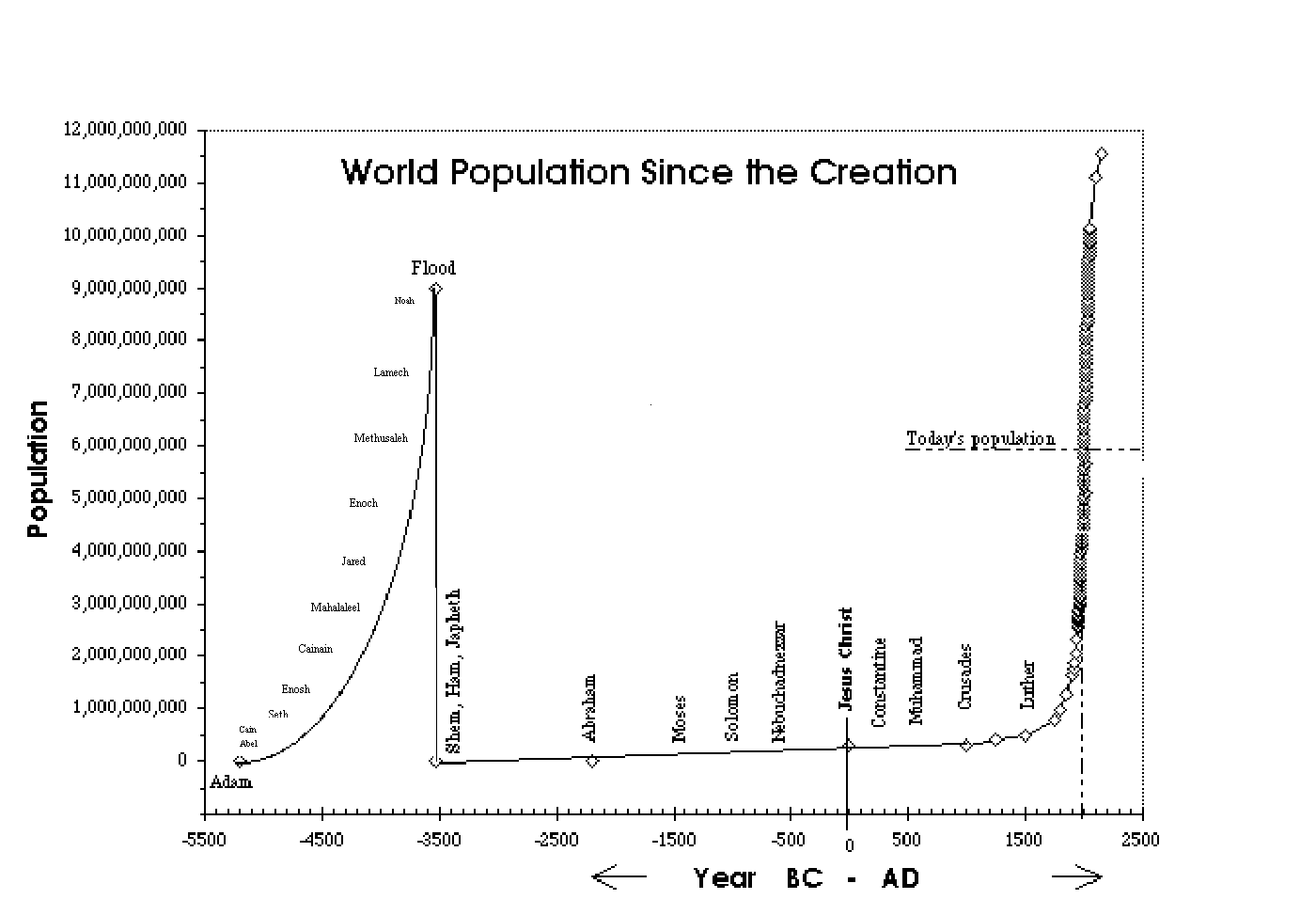
Truth as Logos and Sophia
Another factor should be kept in mind in attempting to understand Genesis One (especially)
is that the text of the Bible is written in a time-linear sequence. The format of presenting
information could be called "logos" truth. The Bible, like any book, has a start and a finish and
the story line proceeds from beginning to end by means of a series of linked statements which follow
one another in a sequence. Actually, we humans are able to perceive truth in two ways.
In the first way, "logos" truth is presented as a series of statements, one following
another--"line upon line, precept upon precept, here a little, there a little." Such sequential statements relate a story containing certain events as they happened
from the view point of an observer who was on the scene recording things as they happened
in his experience. The sequence of events flows from past to present to future. Also logos truth is sometimes presented
as a series of "logical" arguments leading to a conclusion. See Logos and Sophia.
The second way we perceive truth is by direct experience, by a
sudden intuitive grasp of "the whole picture," that
is, by perceiving and assimilating information gathered from various
inputs and by synthesizing the inputs in the brain. The result is
what we often call "the big picture." This second form
of truth might be arbitrarily called "sophia" truth.
In a sense it is like wisdom---knowledge based on experience.
Visions and dreams and images present a whole body of information
in concentrated form which we are able to grasp immediately and
analyze later. As the Chinese proverb says, "one picture
is worth a thousand words."
We read a book in linear fashion, a page at a time. After we have
finished the book we can summarize it, and analyze it. A number
of time frames are obvious. These include at least the following:
(1) the time scale of the actual internal plot of the book, (2)
the time it takes us to read the story, (3) the time the author
took to write the book, and (4) the time the author thought about
the book and formulated the plot in his mind before he began writing.
In this example, as readers we begin with information fed into
our brains in logos form, but we save summaries of that truth
in sophia form.
There are two main time frames operating when we read the Bible.
There is the time frame of ordinary history we live in which is
marked out by the number of revolutions of the moon around the
earth, the number of rotations of the earth about its axis and
the number of circuits of the earth about the sun. (These can
all be translated into ordinary seconds, minutes, hours, days
and years of course). The second major time frame is that of the
spiritual realm---God's clock, God's calendar. (See Time
and Eternity)
Levels of Meaning in the Text of the Bible
Note that there are levels of meaning inherent
in the text. Even the exact sequence of the letters and the frequency
of appearance of the letters of the Hebrew alphabet has been supernaturally
ordered. Sound Bible interpretation teaches that we first take
the obvious, literal meaning of the text as the most important
interpretation. Are we to take the Bible "literally?"
Yes, of course we are! After we have done that, we will often
find for example that Old Testament Bible passages are "typical"---that
is they illustrate in shadow form a more complete revelation which
is given later in time in the New Testament. An example would
be the offering of Isaac by his father Abraham as a sacrifice
on Mt. Moriah (Genesis 22). Abraham is a type of God the Father
and Isaac a type of the obedient Son. The Greek word tupos,
translated "type" means "blow or imprint."
The imprint of a seal in wax or a die "striking" a coin
is an image or replica of the king's signet ring or the mint's
metal dies. (A "type" is the impression generated, and
the "Antitype" is the generating source).
The Old Testament teaches truth mainly in the form of case histories,
lessons from experience, and by example. The New Testament spells
out truth mostly in the analytical (logos) format.

Genesis One is written as Logos Truth
In Genesis One, nearly every phrase is connected with the phrase
which follows by means of the small Hebrew letter waw,
usually translated and in our English Bibles. The style
of writing is historical---the "waw-consecutive" expresses
a time sequence of activity, one event following another in a
line. James Stambaugh offers an excellent analysis of the grammar
of Genesis One in Understanding the Hebrew
of Genesis One. Note: The Hebrew perfect tense verb, preceded by a waw transforms the verb into essentially a future tense.
Example, Genesis 1:15. The verb is the future of "be," so I would
translate it "and they will be".
Reading Genesis as a series of consecutive, sequential statements
about God's work in creation one can see that on the First Day
of creation, God called into existence (1) space, (2) time, (3)
matter and then (4) light---i.e. energy. The initial temperature
in the universe was evidently moderate: water was present---not
frozen or gaseous---but liquid (tehom and mayim
in Gen. 1:2).
[Note: Water can be stable and liquid at very high pressures and temperatures.
See Metallic Water]
After creating "the heavens and the earth,"---that
is space, time and matter--- God then called light into existence.
God Himself is Light, but there is also created light in the universe,
that is, photons of all wavelengths. The statement "And God
said, 'Let there be light'" (1:3) is equivalent to saying
"Let there be energy." See also Introduction
to the Early Chapters of Genesis.
|
Genesis One (NKJV): Frequent use of the word
"and" (the wav connective
)
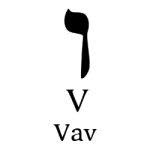
|
| 1:1 In the beginning God created the heavens
and the earth. 2 (And)
The earth was without form, and void; and
darkness [was] on the face of the deep. And
the Spirit of God was hovering over the face of the waters. 3
(And) Then God said, "Let there
be light"; and there was light.
4 And God saw the light, that it
was good; and God divided the light
from the darkness. 5 God called the light Day, and
the darkness He called Night. (And)
So the evening and the morning were the first day. 6 (And)
Then God said, "Let there be a firmament in the midst of
the waters, and let it divide the
waters from the waters." 7 (And)
Thus God made the firmament, and
divided the waters which were under the firmament from the waters
which were above the firmament; and it
was so. 8 And God called the firmament
Heaven. (And) So the evening and
the morning were the second day. 9 (And)
Then God said, "Let the waters under the heavens be gathered
together into one place, and let
the dry land appear"; and it
was so. 10 And God called the dry
[land] Earth, and the gathering
together of the waters He called Seas. And
God saw that it was good. 11 (And)
Then God said, "Let the earth bring forth grass, the herb
that yields seed, and the fruit
tree that yields fruit according to its kind, whose seed is in
itself, on the earth"; and
it was so. 12 And the earth brought
forth grass, the herb that yields seed according to its kind,
and the tree that yields fruit,
whose seed is in itself according to its kind. And
God saw that it was good. 13 (And)
So the evening and the morning were the third day. 14 (And) Then God said, "Let there be
lights in the firmament of the heavens to divide the day from
the night; and let them be for signs
and seasons, and for days and years;
15 and let them be for lights in
the firmament of the heavens to give light on the earth";
16 (And) Then God made two great
lights: the greater light to rule the day, and
the lesser light to rule the night. He made the stars also. 17
(And) God set them in the firmament
of the heavens to give light on the earth, 18 and
to rule over the day and over the night, and
to divide the light from the darkness. And
God saw that it was good 19 (And)
So the evening and the morning were the fourth day. 20 (And) Then God said, "Let the waters
abound with an abundance of living creatures, and
let birds fly above the earth across the face of the firmament
of the heavens." 21 (And) So
God created great sea creatures and every living thing that moves,
with which the waters abounded, according to their kind, and every winged bird according to its
kind. And God saw that it was good.
22 And God blessed them, saying,
"Be fruitful and multiply,
and fill the waters in the seas, and let birds multiply on the earth."
23 (And) So the evening and the
morning were the fifth day. 24 (And)
Then God said, "Let the earth bring forth the living creature
according to its kind: cattle and creeping
thing and beast of the earth, each
according to its kind"; and it
was so. 25 And God made the beast
of the earth according to its kind, cattle according to its kind,
and everything that creeps on the
earth according to its kind. And
God saw that it was good. 26 (And)
Then God said, "Let Us make man in Our image, according
to Our likeness; (and) let them
have dominion over the fish of the sea, over the birds of the
air, and over the cattle, over all
the earth and over every creeping
thing that creeps on the earth." 27 (And)
So God created man in His own image; in the image of God He created
him; male and female He created them. 28 (And)
Then God blessed them, and God said
to them, "Be fruitful and multiply;
fill the earth and subdue it; have
dominion over the fish of the sea, over the birds of the air,
and over every living thing that
moves on the earth." 29 And God
said, "See, I have given you every herb that yields seed
which is on the face of all the earth, and
every tree whose fruit yields seed; to you it shall be
for food. 30 (And) Also, to every
beast of the earth, to every bird of the air, and
to everything that creeps on the earth, in which there is life,
I have given every green herb for food"; and
it was so. 31 (And) Then
God saw everything that He had made, and indeed it was very good.
So the evening and the morning were the sixth day. 2:1 (And) Thus the heavens and the earth,
and all the host of them, were finished. 2 And
on the seventh day God ended His work which He had done, and He rested on the seventh day from
all His work which He had done. 3 (And)
Then God blessed the seventh day and sanctified
it, because in it He rested from all His work which God had created
and made. 4 This [is] the history of the heavens and the earth
when they were created... |
In contrast with this Biblical order of events, the Big Bang model
hypothesizes that the universe began with a burst of light. Matter
followed afterwards after the fireball cooled. But in Genesis
1, the creation of light seems to have been the second
of God's creative acts, not the first. Recent observations strongly suggest that the Big Bang Never Happened.
Secular cosmology estimates the number of protons in the universe
as approximately 1080--whereas the number of photons
in the universe appears to be about 9 orders of magnitude greater
than the number of protons. (Ref. 1) At first, the light created
on Day One was apparently not concentrated into the stars, since
this occurred on Day Four. The residual background radiation of
space described in the Big Bang Model as the residual energy from
the original fireball may instead be the left-over light energy
from God's separate creative act of calling energy into existence.

Creation in Stages by a Master Craftsma
The Days of Creation are Paired
 At the end of Day One space, time, matter, and energy had been
brought into existence as amorphous raw materials out of which
a finished universe would be sculpted and formed during the five
days which were to follow. The ancient Greeks thought the four
building blocks of the universe were air, earth, fire and water.
Four is the Biblical number for the world---the Greeks weren't
too far from being on the right track if we compare air/space,
fire/energy, and earth/matter. They missed the "element"
of time as a building material for the construction of the universe.
At the end of Day One space, time, matter, and energy had been
brought into existence as amorphous raw materials out of which
a finished universe would be sculpted and formed during the five
days which were to follow. The ancient Greeks thought the four
building blocks of the universe were air, earth, fire and water.
Four is the Biblical number for the world---the Greeks weren't
too far from being on the right track if we compare air/space,
fire/energy, and earth/matter. They missed the "element"
of time as a building material for the construction of the universe.
Prior to this creative activity of God none of these entities
existed. However God, who is Spirit, existed. In fact He has always
existed and His existence is independent of time and space, and
also of all created things. It was not necessary for God
to create a universe. God is complete and whole in His own Being
and the existence of a universe with all its life-forms and awesome
extent adds nothing to God.
Although God is One God, He exists in three Persons. This we know
from God's own self-revelation of Himself to us as recorded in
the Bible. The Persons of the Godhead work together in Creation
as they do in the sustenance and management of the universe, in
the redemption of men, in judgment, and in the creation of the
new world which is to come. The God of the Bible is a "personal"
God. He is a living, intelligent, loving being and has created
us capable of relationships with Him and with one another.  The Bible emphasizes that the universe was created in six days.
"for in six days the LORD made heaven and earth, the sea,
and all that is in them, and rested the seventh day; therefore
the LORD blessed the sabbath day and hallowed it. " (Exodus
20:11) The Hebrew word for an ordinary 24-hour day, yom, is
used. Endless and often futile debates have raged over whether
or not the seven days of Creation Week were literal 24-hour days
or long periods of time.
The Bible emphasizes that the universe was created in six days.
"for in six days the LORD made heaven and earth, the sea,
and all that is in them, and rested the seventh day; therefore
the LORD blessed the sabbath day and hallowed it. " (Exodus
20:11) The Hebrew word for an ordinary 24-hour day, yom, is
used. Endless and often futile debates have raged over whether
or not the seven days of Creation Week were literal 24-hour days
or long periods of time.
Part of the problem in understanding creation week is that this
interval of time---when God was in the process of creating everything---was
truly unique and never to be repeated. I have attempted to depict
this situation by the following diagram. The time frame we live
in now is represented by the broad line extending to the right,
but I have shown creation week as a wheel or disk at right angles.
"Eternity past"---when there was no universe at all, lies to the left of the colored disc. Genesis One (since it is recording truth in logos format) describes
the order of creation as Day 1, followed by Day 2, 3, 4, 5, 6,
and finally 7. After that man's history begins. However I have
color-coded Days 1 and 4, Days 2 and 5 and Days 3 and 6 to show
that they bear a relationship to each other (as will be described
a bit later). God is outside of time, so while constructing the
universe He could actually have worked on all six days at once,
or built them separately as modules and put them together into
one pie all at the end.
There is an "observer" present in the narrative of Genesis
One, and the observer appears to be standing on the Earth as his
observation platform, but the observer is clearly God Himself in Genesis Chapter One. In Jewish rabbinical legends, while creating
the universe God is said to have stood on the "Foundation
Stone" which would later be under the Holy of Holies of the
Temples in Jerusalem. See Absolute Geocentricity.
The following table shows the many action verbs in Genesis Chapter One. Creation was not a single event, but a series of events. It was a complex process taking place over a period of time encompassing, as we are told, six ordinary 24-hour days--that is "creation in 144 hours."
The Eye of God Nebula
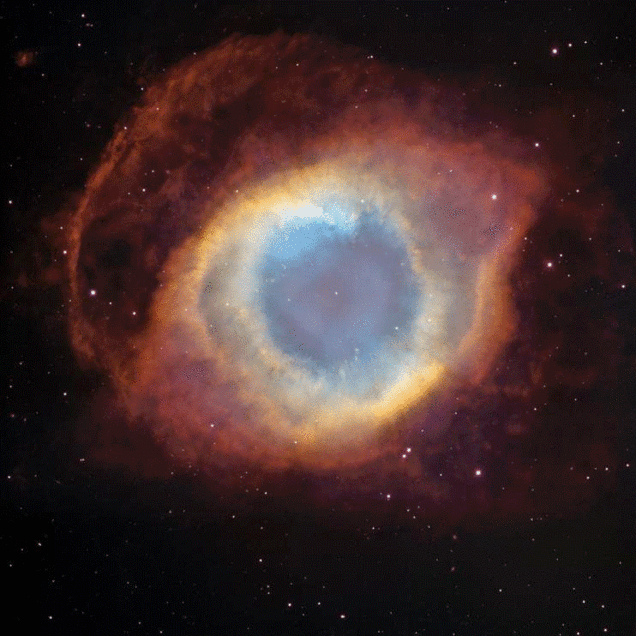
|
Activity by God During
the 144 hours of Creation Week |
|
In the beginning God created the
heavens and the earth. 2 The earth was without form and void,
and darkness was upon the face of the deep; and the
Spirit of God was moving over the face of the waters.
3 And God said, "Let there
be light"; and there was light. 4 And God
saw that the light was good; and God
separated the light from the darkness. 5 God
called the light Day, and the darkness he called
Night. And there was evening and there was morning, one day.
6 And God said, "Let
there be a firmament in the midst of the waters, and let
it separate the waters from the waters." 7 And God
made the firmament and separated
the waters which were under the firmament from the waters
which were above the firmament. And it was so. 8 And God
called the firmament Heaven. And there was evening and
there was morning, a second day. 9 And God
said, "Let the waters under
the heavens be gathered together into one place, and let the dry land appear." And it
was so. 10 God called the dry land
Earth, and the waters that were gathered together he
called Seas. And God saw
that it was good. 11 And God said,
"Let the earth put forth vegetation,
plants yielding seed, and fruit trees bearing fruit in which
is their seed, each according to its kind, upon the earth."
And it was so. 12 The earth brought forth vegetation, plants
yielding seed according to their own kinds, and trees bearing
fruit in which is their seed, each according to its kind. And
God saw that it was good. 13 And
there was evening and there was morning, a third day. 14 And
God said, "Let
there be lights in the firmament of the heavens to separate
the day from the night; and let them be
for signs and for seasons and for days and years, 15 and let them be lights in the firmament of
the heavens to give light upon the earth." And it was so.
16 And God made the two great lights,
the greater light to rule the day, and the lesser light to rule
the night; he made the stars also. 17 And God
set them in the firmament of the heavens to give light
upon the earth, 18 to rule over the day and over the night, and
to separate the light from the darkness. And God
saw that it was good. 19 And there was evening and there
was morning, a fourth day. 20 And God said,
"Let the waters bring forth
swarms of living creatures, and let birds
fly above the earth across the firmament of the heavens."
21 So God created the great sea
monsters and every living creature that moves, with which the
waters swarm, according to their kinds, and every winged bird
according to its kind. And God saw
that it was good. 22 And God blessed them,
saying, "Be fruitful and multiply
and fill the waters in the seas, and let
birds multiply on the earth." 23 And there was evening
and there was morning, a fifth day. 24 And God
said, "Let the earth
bring forth living creatures according to their kinds: cattle
and creeping things and beasts of the earth according to their
kinds." And it was so. 25 And God
made the beasts of the earth according to their kinds
and the cattle according to their kinds, and everything that
creeps upon the ground according to its kind. And God
saw that it was good. 26 Then God
said, "Let us make man in
our image, after our likeness; and let
them have dominion over the fish of the sea, and over
the birds of the air, and over the cattle, and over all the earth,
and over every creeping thing that creeps upon the earth."
27 So God created man in his own
image, in the image of God he created him; male and female he
created them. 28 And God blessed them,
and God said to them, "Be
fruitful and multiply, and fill the earth and subdue it; and
have dominion over the fish of the sea and over the birds
of the air and over every living thing that moves upon the earth."
29 And God said, "Behold,
I have given you every plant yielding seed which is upon
the face of all the earth, and every tree with seed in its fruit;
you shall have them for food. 30 And to every beast of the earth,
and to every bird of the air, and to everything that creeps on
the earth, everything that has the breath of life, I
have given every green plant for food." And it was
so. 31 And God saw everything that
he had made, and behold, it was very good. And there was evening
and there was morning, a sixth day. 2:1 Thus the heavens and
the earth were finished, and all the host of them. 2 And on the
seventh day God finished his work
which he had done, and he rested
on the seventh day from all his work which he had done. 3 So
God blessed the seventh day and hallowed it, because on it God rested from all his work which he
had done in creation. 4a These are the generations of the heavens
and the earth when they were created.
In this passage:
God [Elohim] occurs 35 times
God is called "He" 10 times
God said, 10 times
"I Have Given" occurs twice
God created, 6 times
God made, 5 times
God saw, 7 times
"Let There Be", 15 times
(God) rested, 2 times
(God) finished, 2 times
Spirit moving, once
"And it was so," 6 times
Called "good" 6 times and "very good" once
|

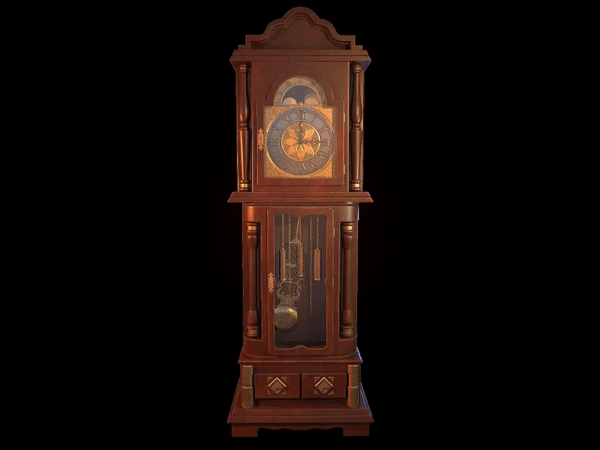
My Grandfather's Clock
An ordinary mechanical clock consists of a system of gears which
move the second, minute, and hour hands around the face at the
appropriate rates. The power comes from a wound-up spring or a
system of weights at the end of a chain. The rate at which the
clock runs is determined by an oscillating balance wheel, or by
a pendulum. The pendulum allows the gears to move one increment
per pendulum period only. The clock run rate is determined by
the period, T, of the pendulum:
The length of the pendulum is l, and g is the local gravitational
acceleration.
 Small g is related to the universal gravitational constant,
G, by Newton's Law of Gravitation which states that the gravitational
attraction between two masses M and m are governed by an inverse square law,
r being the distance between the centers of the two objects:
Small g is related to the universal gravitational constant,
G, by Newton's Law of Gravitation which states that the gravitational
attraction between two masses M and m are governed by an inverse square law,
r being the distance between the centers of the two objects:

Clocks and watches driven by quartz crystals and battery powered
have run rates determined by basic physical, mechanical laws.
Clocks of this kind also measure what has been called "dynamical time." In contrast atomic clocks are dependent upon rates
of radioactive decay, by the interval between atomic transitions,
by the spectral wavelength of emitted photons, etc. But atomic
clocks are not necessarily running in lock-step with mechanical
clocks.
 The calendars and clocks used in the Bible for recording historical
events are all based on the dynamical time system:
The calendars and clocks used in the Bible for recording historical
events are all based on the dynamical time system:
And God said, "Let there be lights in the firmament of
the heavens to separate the day from the night; and let them
be for [measuring] signs and for seasons and for days and years,
and let them be lights in the firmament of the heavens to give
light upon the earth." And it was so. And God made the two
great lights, the greater light to rule the day, and the lesser
light to rule the night; he made the stars also. And God set
them in the firmament of the heavens to give light upon the earth,
to rule over the day and over the night, and to separate the
light from the darkness. And God saw that it was good. And there
was evening and there was morning, a fourth day. (Genesis 1:14-19)
To return to the analogy of the pendulum clock, once the clockmaker
has designed the clock and built the parts the run rate of the
clock has been forever determined. But only after the clock has
been assembled and started will it "keep time." As far
as the clock parts are concerned, the time-keeping history of
the clock begins when the clock starts ticking, not when the component
parts are manufactured.
Although God's "wristwatch" recorded cycles of what
would later be 24-hour days while He was creating the universe,
time as we know it now was not defined during creation week---at least by the standards
we now use to measure time. This is because the universe is in
fact a UNI-verse and all its parts and pieces are interlinked
and interdependent. Only when all the universe was completed could
the planets run properly in their appointed courses and the atomic
particles begin their interactions with one another, within and
around the nucleus. We can not take time as we experience it now
and extrapolate it backwards in history all the way to Day One
of creation week. We can, with confidence talk about historical
events and their time sequence beginning with Adam's exit from
the Garden. This later approach is more that sufficient to establish
a universe which was only recently created. Adam One and Adam
Two (Jesus Christ) are clearly linked in the Old Testament by
a clear line of genealogical ties. The maximum time frame between
the Two Adams is clearly only a few thousand years. See also, Absolute Geocentricity.

Time is Multidimensional

The Universe is Hands-On Craftsmanship by a Master Artisan
In creation, God the Father is the Designer of the universe. Everything
was built according to a plan conceived in His mind. The universe
was then spoken into existence by God the Son (John 1). The thoughts
of God were put into the form of spoken words and from the words
of the Son of God, the creation sprang into existence and took
on form and shape. The universe was empowered, molded and crafted,
and inanimate cells were given life by God the Holy Spirit. Thus,
God did not order the universe into existence as a finished and
complete system. He elected to first create the raw material needed
for the universe. Then He crafted and molded the raw materials
into their final forms, imparting energy and life like wise in
a series of steps. The creation involved the cooperative work
of all three persons of the godhead. The Biblical view of God
is that of a "hands-on" creation. God stayed involved
with every step of the design, fabrication and finishing of the
universe, and He remains involved to this day as the Sustainer
of everything (Colossians 1:16,17).
"Six days you shall labor, and do all your work; but
the seventh day is a sabbath to the LORD your God; in it you
shall not do any work, you, or your son, or your daughter, your
manservant, or your maidservant, or your cattle, or the sojourner
who is within your gates; for in six days the LORD made heaven
and earth, the sea, and all that is in them, and rested the seventh
day; therefore the LORD blessed the sabbath day and hallowed
it." (Exodus 20:9-11)
The six days of creation were a unique, never-to-be-repeated
season in which God was at work as a Master Craftsman, Architect,
Artisan, Builder and Maker of all things. (Therefore God loves
the universe and all the life-forms He has placed in it. Man was
the last to be created, not the first, which means that we can
not say we are important to God and nature is not).
Incidentally, Proverbs 8:22-36 is believed by many Bible commentators
to be a statement by the Son of God---personified as Lady Wisdom---commenting
on the creation period:
"The Lord brought me forth (Hebrew: begot or possessed) me at the beginning of his work, the first of his acts of old.
Ages ago I was set up, at the first, before the beginning of
the earth. When there were no depths I was brought forth; when
there were no springs abounding with water. Before the mountains
had been shaped, before the hills, I was brought forth, before
he had made the earth with its fields, or the first of the dust
of the world.
"When he established the heavens, I was there: when he drew
a circle on the face of the deep, when he made firm the skies
above: when he established the fountains of the deep: When he
assigned to the sea its limit, so that the waters might not transgress
his command, when he marked out the foundations of the earth,
then I was beside him, like a master workman; and I was daily
his delight, rejoicing before him always, rejoicing in his inhabited
world, and delighting in the sons of men.
"And now, my sons, listen to me: happy are those who keep
my ways. Hear instruction, and be wise, and do not neglect it.
Happy is the man who listens to me, watching daily at my gates,
waiting beside my doors. For he who finds me finds life and obtains
favor from the Lord; but he who misses me injures himself, all
who hate me love death.'" (Proverbs 8:1-36)
Some false religions have taken Proverbs 8:1 to teach that Jesus the
Son of God was the first of God's creative works. This is not
correct. The Hebrew verb is closer to the New Testament term "begotten"--Jesus
is the eternally begotten Son of the Father.
Since we are house-guests in God's universe, we ought to take note of God's love for His house, and all its inhabitants. The creative work of God clearly shows that man can not be separated from an ecosystem. The entire universe was built with man in mind as God's crowning work of creativity. One lesson of history we ought to now be painfully aware of is man's demonstrated poor stewardship over nature and the lost dominion over creation which God originally entrusted into his hands.
The Initial Stages: A Universe Unformed and Unfilled
The initial state of creation after space, matter, time and energy
were created is described in Hebrew (1:2) as tohu waw bohu,
that is "unformed and unfilled." This term implies that
God was not finished with his creative work on the first day,
but had only taken the first steps that would lead to a completed
universe at the end of six days. All through the Bible God can
be seen to (1) bring order out of disorder, (2) light out of darkness,
(3) life out of death in His workings in redemptive history.
Genesis One is a series of consecutive statements intended for
readers who live in one-dimensional time. For us, historical events
always unfold from the future into the present and thence into
the past, as noted above. However, God's creative handwork during
the six days of creation actually occurred from outside of time
as can be seen by pairing the days of creation as illustrated
in Figure 1. Days 1 and 4 go together as do Days 2 and 5, and
3 and 6. The first three days of creation involve the work of
forming the basic structure of things, and the last three days
constitute God's work of filling the universe---answering the
initial state of space, time, matter and energy---which was tohu
wabohu. The universe is God's house (John 14:2, 3; Isaiah
66:1, 2). He did not create it to remain unformed and unfilled. Furthermore, He has made it to be an orderly home, inhabited by various orders of living creatures who are to live under his loving rule (Isaiah 45:18). The Gap Theory can be easily refuted since there was clearly no evil in the universe until some time after Genesis 1:31). (See Ref. 1)

Evidently God did not create the universe in a single step,
by one all-encompassing command, as Big Bang cosmology would infer.
He created the universe, (visible and invisible), in a time period
of six days. During this interval the usual laws of physics were
not in effect. We should picture a big sign, UNDER CONSTRUCTION,
posted on the job site where creation occurred to remind ourselves
not to attempt to understand creation week by extrapolating present
day laws and observations backwards from the present. This is
one common error of uniformitarianism denounced by the Apostle
Peter in his second epistle. The Laws of Physics were undefined until the clock was assembled and started running. The apparent start date was about 5800 BC. Before that, time was undefined!
Building a House
If the universe is "God's house" as Scripture suggests,
then creation week can perhaps be better understood by looking
at how men build houses.
One first selects a location for one's house. The plot of
land is purchased and secured. The land is cleared. The architect
draws up the plans.
Contractors arrive and first the foundations are laid. Raw
materials are brought to the job site (sand, concrete, lumber,
nails, shingles, windows, bricks). Upon the foundation one builds
the frame of the house, which at first resembles a shell. It
is not at this time inhabitable, but the original formless materials
have at least been given form
and shape according to the architect's design.
 When the structural framework of the house is completed siding
and shingles are added to the outside and interior walls, partitions,
doors, floors and utilities are put into place. When the structural framework of the house is completed siding
and shingles are added to the outside and interior walls, partitions,
doors, floors and utilities are put into place.
The second stage of the building of the house is exterior
landscaping and interior equipping and furnishing: carpets, drapes,
appliances and furniture.
Broadly speaking the first stage of construction is "forming"
and the second stage is "filling." These two stages
answer the original condition at the end of the First day of
creation week when the universe was "tohu wabohu"--
unformed and unfilled.
Human habitations consist of structures--which are assembled--plus
an ecosystem and an environment. When both have been integrated
together and completed, one has a complete house. The house can
then be lived in and enjoyed.
Thus says the LORD: "Heaven is my
throne and the earth is my footstool; what is the house which
you would build for me, and what is the place of my rest? All
these things my hand has made, and so all these things are mine,
says the LORD. But this is the man to whom I will look, he that
is humble and contrite in spirit, and trembles at my word. (Isaiah
66:1-2)
|



As we have said, during creation week Elohim (Father, Son, Holy
Spirit), working together by divine counsel, constructed the entire universe,
(Colossians 1:15-19, Hebrews 1:1-4, etc.). So far we have talked only about
the physical universe. But, our universe includes a vast invisible
world we call the spiritual world, or "the heavenly places,"
with its unique inhabitants (spirit beings known as the angels).
Knowledge of the spiritual world is accessible to us only by revelation
and can not be investigated by science which is limited to observational
data gathered by the five senses. Yet, we can not expect to understand
the universe apart from the Biblical revelation that events and
happenings in the spiritual world constantly affect the material
realm. The two "worlds" are tightly coupled and mutually
interactive.
The creative activity of the godhead ceased on the Seventh Day.
Thus God is not now creating the universe. Yet He is still working
today (John 5:17). God is (1) sustaining the old creation, (2)
redeeming men out from all peoples, and (3) preparing a new creation
(John 14:1-3). God is sovereign in all the affairs of men, "working
all things according to the counsel of his will" as Paul
states in Ephesians.
 God is the observer in Genesis Chapter One, so we must take his
word for the order of events during creation week. For instance,
He tells us that the length of each of the six created modules,
or days, (yom) is what we now know as a standard 24 hour
day. That is, our present cycle of 7, 24-hour days per week is
stamped from the template of the seven days of creation. The clock
appointed by God to keeping time for us was not set in operation
until Day Four, however (Genesis 1:17,18). Dynamical time is determined
by the motion of the sun moon and stars, i.e., by Newton's Law
of Gravity and Kepler's Laws of motion. The clock run rate for
dynamical time was established by the fundamental design of the
physical universe. The other common scientific standard of time
measurement is atomic time. Dynamical time and atomic time were
originally locked in step with one another, but the Fall
has apparently brought about a slowing down of atomic time clocks
with respect to dynamical time. Time has other dimensions as well,
for instance there is a different flow of time in the spiritual
world. In short, time is actually multi-dimensional (even more
than Einstein suspected) and we poor fallen creatures are at present
very much trapped in a very restricted time frame. Our modern scientific speculations about creation week may be compared to a boy looking through a knot hole in the fence of an immense construction site.
God is the observer in Genesis Chapter One, so we must take his
word for the order of events during creation week. For instance,
He tells us that the length of each of the six created modules,
or days, (yom) is what we now know as a standard 24 hour
day. That is, our present cycle of 7, 24-hour days per week is
stamped from the template of the seven days of creation. The clock
appointed by God to keeping time for us was not set in operation
until Day Four, however (Genesis 1:17,18). Dynamical time is determined
by the motion of the sun moon and stars, i.e., by Newton's Law
of Gravity and Kepler's Laws of motion. The clock run rate for
dynamical time was established by the fundamental design of the
physical universe. The other common scientific standard of time
measurement is atomic time. Dynamical time and atomic time were
originally locked in step with one another, but the Fall
has apparently brought about a slowing down of atomic time clocks
with respect to dynamical time. Time has other dimensions as well,
for instance there is a different flow of time in the spiritual
world. In short, time is actually multi-dimensional (even more
than Einstein suspected) and we poor fallen creatures are at present
very much trapped in a very restricted time frame. Our modern scientific speculations about creation week may be compared to a boy looking through a knot hole in the fence of an immense construction site.
The flow of time in the forward direction we call "history"
seems to have been initiated at the end of creation week. Time
has subsequently been disrupted by the Fall of man, as was the
rest of nature, resulting in the presently-observed irreversible
nature of time in physics which is called "time's arrow."
But God is outside of all time:
"For thus says the High and Lofty One Who inhabits eternity, whose name is Holy: 'I dwell in the high and holy place, With him who has a contrite and humble spirit, To revive the spirit of the humble, And to revive the heart of the contrite ones. For I will not contend forever, Nor will I always be angry; For the spirit would fail before Me, And the souls which I have made.'" (Isaiah 57:15-16)
Scripture actually suggests that the final solution concerning
all the details of our universe's early history may elude us,
(Ecclesiastes 3:11, Acts 1:7). Genesis does not give us a date for creation.
One of the best arguments for a recent origin of the universe
is the careful genealogical record the Bible gives us which connects
the First Adam with the Last. It is impossible to move Adam into
the distant past more than a few millennia before Jesus, the Second, or Last
Adam, was born, without doing violence to the text of the Bible.
However we can not dogmatically set an exact date for the creation
because we do not have full information on discontinuities in
physical laws occurring in the past. In addition the very nature
of time itself as we perceive and measure it has been affected
by the fall.
The stretching out of the heavens (1:6, 7) (Hebrew: raqia)
suggests the Creator expanded out the initial volume of space
on Day Two. This expansion pushed water up and out to the boundaries
of "space" and left waters below out of which the dry
land of earth's one continent would be raised (2 Peter 3:5, Psalm
104:5-9, Genesis 1:9). The nature of space as a medium is as much
a mystery to us as ever, yet from Maxwell's equations we know
space possesses electrical permeability, mu0, and permittivity,
epsilon0, from which a propagation velocity, c, for
electromagnetic waves is derived,
c = [1 / mu0 epsilon0 ]1/2, and
also a "characteristic impedance", Z = [mu0
/ epsilon0]1/2.
These electrical properties of space and matter govern reflection
and refraction of light and radio waves. The velocity of light
drops in a dielectric medium by a factor of the square root of
the dielectric constant of a material, for instance. The Laws of Physics are everywhere the same, by the way.
The stretching out of the fabric of space, "like a tent"
(Jeremiah 10:12, Psalm 104:2) seems to have also required the additional
investment of energy from the Creator's hand. The whole of space
was stretched out to a fixed, maximum "diameter" either
in a matter of hours, or perhaps instantaneously, on Day Two.
Any subsequent shrinkage of space (as a result of the fall of
man and the angels, or as a result of judgments from God) would
require space to give up its excess energy, presumably resulting
in dissipative, destructive events. Or, additional input from
the "vacuum" (i.e. from God) may be flowing into the
universe now as the sustaining energy spoken of in the New Testament.
(See What Holds the Universe Together?) Although it may require a radical change in our current thinking,
it is Biblically reasonable to think of the universe as not now
expanding, but perhaps having shrunk from its initial size or
else remaining static in size since Day Two. Stretching out space
on Day Two would lower both mu and epsilon to minimum values,
and this could mean that the initial velocity of light at the
end of Day Two was higher than it is now by many orders of magnitude. The Big Bang is apparently an incorrect model of creation.
By analogy to Maxwell's equations, some cosmologists assign space
gravitational metric properties as well. (Ref. 2) Just as the
electrical properties of free space affect charged particles,
so also the mechanical parameters of gravitational permittivity
and permeability (mu0 epsilon0) affect the curvature of space
and the interaction of masses according to Newton's Law of Gravity.
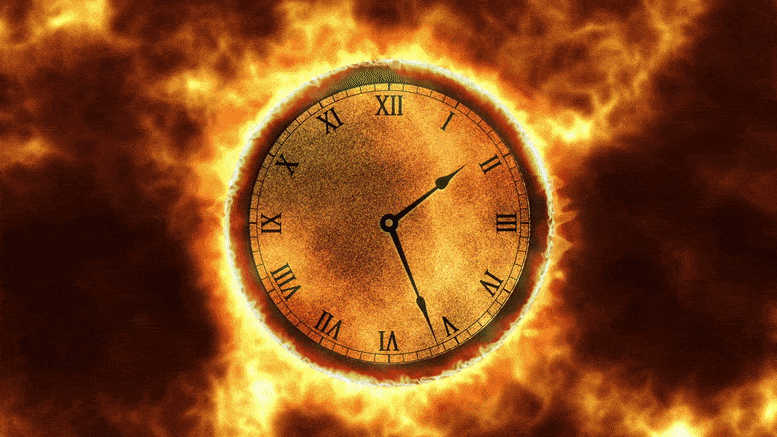 The warning to us from the Apostle Peter in his second epistle (3:3ff) tells us we must think of the ordinary,
present-day laws of physics as being inappropriate for describing creation week. An analogy might be the
construction of an aircraft. The aircraft, as a finished flying machine, can not be described until
it takes off on its maiden flight. After the designers' plans leave the drawing board,
aircraft components and modules--engines, fuselage sections, landing gear, seats,
instruments, etc.--are all ordered from subcontractors and brought to an assembly plant
where they are fitted together along an assembly line. Though we can understand each step of
the creative process our understanding of the aircraft as a unified system does not begin until the aircraft starts to fly.
The training and experience of the flight crew is another matter. Without them it's "no fly" for very expensive plane.
The warning to us from the Apostle Peter in his second epistle (3:3ff) tells us we must think of the ordinary,
present-day laws of physics as being inappropriate for describing creation week. An analogy might be the
construction of an aircraft. The aircraft, as a finished flying machine, can not be described until
it takes off on its maiden flight. After the designers' plans leave the drawing board,
aircraft components and modules--engines, fuselage sections, landing gear, seats,
instruments, etc.--are all ordered from subcontractors and brought to an assembly plant
where they are fitted together along an assembly line. Though we can understand each step of
the creative process our understanding of the aircraft as a unified system does not begin until the aircraft starts to fly.
The training and experience of the flight crew is another matter. Without them it's "no fly" for very expensive plane.
A separate article discusses the fall of the angels and man. The
universe as we experience it today is a very different universe
than it was on the Seventh Day at the end of creation week. Our
present universe is fallen, whereas the creation after it was
finished at the end of creation week was unflawed, unfallen (Genesis
1:31, 2:1). (See The Ruin of Creation).
Proverbs 25:2 says that "It is the glory of God to conceal
things, but the glory of kings is to search things out."
Our Bibles are full of wonderful secrets not only about life and
morals and human behavior, but about all of physical and spiritual
reality. It is only for us as members of God's royal family to
search them out.
I have prepared the following chart to show how the total energy
and entropy of the universe may have changed during Creation
Week as God acted by creating and then fashioning our universe
step by step. This chart is probably a bit fanciful---I have included
it to emphasize what I believe about creation, namely that creation
was not a single spoken event by God that set everything into
motion, but that a Designer and Architect and Craftsman built
the universe. We live in a hands-on universe. It does not belong
to us. It belongs to Another!
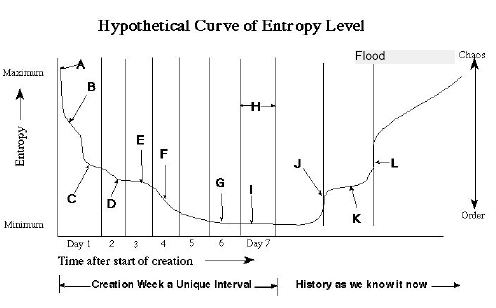
The Second Law of Thermodynamics states that "entropy
always increases" (in a fallen universe). Entropy measures
(1) the amount of available energy to do useful work, (2) the
degree of order in a system. Low entropy means lots of available
energy and a high degree of order and complexity. Prior to the
fall of the angels (who govern the universe under God), the Second
Law was evidently not in effect, i.e., the physical universe was
apparently not degenerative, or it was self-renewing. Apart from
God's intervention the present universe is running down and becoming
more and more disorderly. During the coming Millennial kingdom,
Jesus the Lord will evidently restore nature and probably reverse
the Second Law. It is always God who brings order out of chaos,
light out darkness, and life out of death.
Captions on the chart:
A. Day 1: Entropy is undefined before creation begins. To
the left of the graph is "eternity past." God exists
outside of time and space. There is no pre-existing matter.
B. Day 1: Space, time and matter are brought into existence.
Entropy drops sharply because of large reservoir of energy capable
of doing work is now in existence. This energy is in the form
of rest mass, E=mc2.
C. Day 1: Light is created. Photons (perhaps of all wavelengths)
imply that additional energy has now been added to the universe.
Entropy drops further because of the creation of this new energy.
D. Day 2: The heavens are stretched out and attain their maximum
diameter, which is the present diameter of the universe. A further
addition of energy from God is involved, due to work done stretching
the fabric of space. Entropy drops further.
E. Day 3: Genetic codes and living systems are created. This
lowers the total entropy of the universe further because of the
high degree of order, or information content in genetic codes.
Random, simple molecules are assembled into highly-ordered structures
by God as Artisan.
F. Day 4: The sun, moon and stars created. Energy created on
Day 1 is concentrated. Amorphous matter also created on Day 1
is assembled into the heavenly bodies. The universe now has a
higher degree of order, hence still lower entropy.
G. Day 6: The creation of man and the higher animals. Orderly
living systems are built and programmed with "seeds"
for replicating.
H. Day 7: God "rests," that is, He ceases from the
work of creating and begins his work of sustaining the cosmos.
I. Day 7: The universe is now complete and entropy has its lowest
value (maximum energy reserves plus highest degree of order).
Since the entire universe is interlinked, it could not function
as a working system until the end of Day 6. The finished universe
now begins to function and history as we know it begins to be
measured. The Biblical clock is established by the motion of
the moon, earth and heavenly bodies.
J. Date Unknown (after creation week): The fall of the angels.
The government of nature is disrupted. Angels play a prominent
role in the management of the forces of nature during the age
we now live in. The sin of man brings a "curse" on
the earth further increasing the tendency of all things to rust,
rot, wear out, and decay. Nature yields less bountifully. Thorns
and thistles and opportunistic diseases increase.
K. The "Old" Creation is now "ruined" and
hopelessly flawed. The Second Law of Thermodynamics is in effect,
and from now on, "Entropy always increases." God's
ultimate remedy will be the creation of "new heavens and
a new earth."
L. The Flood of Noah. The rate of disorder and decay is probably
accelerated at this time. Human life spans diminish after the
Flood, for instance. The language of 2 Peter suggests the Flood
affected the entire universe, not just the earth. The Flood was
a major cataclysm as the Greek word suggests. The Hebrew mabbul suggests the same thing: an overwhelming disaster.

“Heaven is My throne,
And earth is My footstool.
Where is the house that you will build Me?
And where is the place of My rest?
For all those things My hand has made,
And all those things exist.”

The Bible is quite clear that one or more major disruptions in
the Laws of physics have occurred in the history of the universe.
These are in some way associated with (a) the fall of the chief
angel, Lucifer and his hosts who partially are responsible for
the management of the forces of nature, (b) the fall of man and
a decrease of sustaining power into the universe from the spiritual
realm at that time, and (3) another major disruption in nature
at the time of the Flood of Noah.
Modern secular cosmology assumes uniform conditions and immutable laws
of physics from the present moment extending backwards in time
to the beginning of time, t = 0. Unless cosmological theorists
are willing to make allowances for what has been given to us concerning
the early history of the universe by revelation from our Creator,
secular theories of origins are bound to contain fatal flaws.

Psalm 19
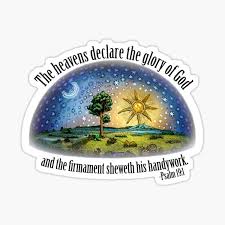
The heavens are telling the glory of God; and the firmament proclaims
his handiwork.
Day to day pours forth speech, and night to night declares knowledge.
There is no speech, nor are there words; their voice is not heard;
yet their voice goes out through all the earth, and their words
to the end of the world.
In them he has set a tent for the sun,
which comes forth like a bridegroom leaving his chamber,
and like a strong man runs its course with joy.
Its rising is from the end of the heavens, and its circuit to
the end of them;
and there is nothing hid from its heat.
The law of the LORD is perfect, reviving the soul;
the testimony of the LORD is sure, making wise the simple;
the precepts of the LORD are right, rejoicing the heart;
the commandment of the LORD is pure, enlightening the eyes;
the fear of the LORD is clean, enduring for ever;
the ordinances of the LORD are true, and righteous altogether.
More to be desired are they than gold, even much fine gold;
sweeter also than honey and drippings of the honeycomb.
Moreover by them is thy servant warned;
in keeping them there is great reward.
But who can discern his errors? Clear thou me from hidden faults.
Keep back thy servant also from presumptuous sins; let them not
have dominion over me!
Then I shall be blameless, and innocent of great transgression.
Let the words of my mouth and the meditation of my heart be acceptable
in thy sight,
O LORD, my rock and my redeemer.

These links should add to your further understanding of this article
God's Rule Through the Angels
THE Angel of the Lord
God's Angels
The Destroying Angel
The Second Psalm
Jesus our Jubilee
The Backside of Love
Living Stones
The Glorious Church
Older References
*bara, used only in referring to God in the Hebrew Bible
occurs in Genesis 1:1, and in v21, 27.
God also "makes"
(asah),
"causes to appear," (hayah),
"forms
(yatsar),
"establishes" (kun), etc.
Man
is "creative" only in that he carries the image of his
Creator.
Only God can call into existence the things that do not
exist (Romans 4:17, Amos 9:6, Psalm 33:6-8). See also Notes
on the Early Chapters of Genesis.
1. James Stambaugh, Star Formation and Genesis
1, Impact #251, Institute of Creation Research, PO Box
2667, El Cajon, CA 92021, May 1994.
2. Davies, Paul, The Accidental Universe, Cambridge
University Press, New York, 1982.
3. Misner, Charles W., Thorne, Kip S., and Wheeler, John Archibald,
Gravitation, W. H. Freeman and Company, San Francisco,
1973.
4. Morton, Glenn R., Changing Constants and the Cosmos,
CRSQ, Vol. 27, No. 2, September 1990, pp. 60-67
5. Norman, Trevor, and Setterfield, Barry, The Atomic Constants,
Light and Time, SRI International Invited Research Report,
August 1987. Other related papers and further technical information
on this subject is available on this web page at On
the Constancy of the Speed of Light.
6. Taking Genesis One seriously and literally poses lots of problems
for doing physics of the early universe. See Physics Problems for Creation Week
7. THE "DAYS" OF CREATION IN GENESIS 1:
LITERAL "DAYS" OR FIGURATIVE "PERIODS/EPOCHS" OF TIME? by Gerhard F. Hasel, late John Nevins Andrews Professor of
Old Testament and Biblical Theology, Andrews University, Berrien Springs, Michigan
8. The Observer's Location in Genesis One: The following notes show how Genesis One begins with a cosmic
view of the entire universe, but soon narrows down to discuss the earth, the ecosystem, then man.
This is in keeping with the overall constant, progressive narrowing of the Bible's focus onto the "scarlet thread" of man's redemption.
(I am presenting here my current thoughts on this matter for discussion purposes. Others may not agree with me and I could change my mind at any time. Comments on this are welcome.)
9. The Music of the Spheres, (Musica universalis). Wikipedia.

Summary of Creation Events
Genesis 1:1 In the beginning God created the heavens and the earth. [Here the term "the heavens and earth" means the entire universe, physical plus the spiritual universe. The planet earth is not in view here]. 2 The earth [still refers to the entire material universe] was without form and void, and darkness was upon the face of the deep [tehom];
and the Spirit of God was moving over the face(s) of the [primeval, universal] waters. 3 And God said, "Let there be light"; and there was light.
4 And God saw that the light was good; and God separated the light from the darkness. 5 God called the light Day, and the darkness he called Night. And there was evening and there was morning, one day.
6 And God said, "Let there be a firmament in the midst of the waters, and let it separate the waters from the waters." [the discussion still refers to the whole universe--all of space everywhere]
7 And God made the firmament and separated the waters which were under the firmament from the waters which were above the firmament. And it was so. 8 And God called the firmament Heaven [shemayim,
almost always plural in Hebrew]. And there was evening and there was morning, a second day [still referring to the entire universe not just the earth].
9 And God said, "Let the waters under the heavens be gathered together into one place, and let the dry land appear." And it was so. 10 God called the dry land Earth,
and the waters that were gathered together he called Seas. And God saw that it was good. [Here is the first mention of our planet, earth (eretz), as a created object within the cosmos.
This is emphasized in the text by God's "naming" of Earth. "Naming" is the way God gives something its identity].
[From here on the focus of Genesis One is that of an observer on the planet earth. Things happening elsewhere in the universe are secondary and de-emphasized from this point on].
11 And God said, "Let the earth put forth vegetation, plants yielding seed, and fruit trees bearing fruit in which is their seed, each according to its kind, upon the earth."
And it was so. 12 The earth brought forth vegetation, plants yielding seed according to their own kinds, and trees bearing fruit in which is their seed, each according to its kind.
And God saw that it was good. 13 And there was evening and there was morning, a third day. 14 And God said, "Let there be lights in the firmament of the heavens to separate the day from the night;
and let them be for signs and for seasons and for days and years, 15 and let them be lights in the firmament of the heavens to give light upon the earth." And it was so.
16 And God made the two great lights, the greater light to rule the day, and the lesser light to rule the night; he made the stars also.
[note the sun and moon are viewed here as more central to the narrative compared to the rest of the stars and planets, which are seen as incidental to the narrative, i.e., "he made the stars also,"
almost as if this were an afterthought]. 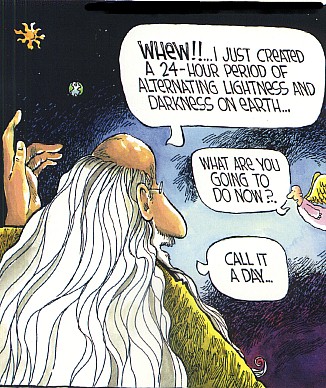
17 And God set them in the firmament of the heavens to give light upon the earth, [earth the center of attention]
18 to rule over the day and over the night, and to separate the light from the darkness. And God saw that it was good. 19 And there was evening and there was morning, a fourth day. 20 And God said,
"Let the waters [on earth] bring forth swarms of living creatures, and let birds fly above the earth across the firmament of the heavens." 21 So God created the great sea monsters and every
living creature that moves, with which the waters swarm, according to their kinds, and every winged bird according to its kind. And God saw that it was good.
22 And God blessed them, saying, "Be fruitful and multiply and fill the waters in the seas, and let birds multiply on the earth." 23 And there was evening and there was morning, a fifth day.
24 And God said, "Let the earth bring forth living creatures according to their kinds: cattle and creeping things and beasts of the earth according to their kinds." And it was so.
25 And God made the beasts of the earth according to their kinds and the cattle according to their kinds, and everything that creeps upon the ground according to its kind. And God saw that it was good.
26 Then God said, "Let us make man in our image, after our likeness; [shift from nature to man] and let them have dominion over the fish of the sea, and over the birds of the air, and over the cattle, and over all the earth, and over every creeping thing that creeps upon the earth."
27 So God created man in his own image, in the image of God he created him; male and female he created them. 28 And God blessed them, and God said to them, "Be fruitful and multiply, and fill
the earth and subdue it; and have dominion over the fish of the sea and over the birds of the air and over every living thing that moves upon the earth." 29 And God said,
"Behold, I have given you every plant yielding seed which is upon the face of all the earth, and every tree with seed in its fruit; you shall have them for food.
30 And to every beast of the earth, and to every bird of the air, and to everything that creeps on the earth, everything that has the breath of life, I have given every green plant for food." And it was so.
31 And God saw everything that he had made, and behold, it was very good. And there was evening and there was morning, a sixth day..."


The Man in Charge of the Universe
"The teaching of the New Testament is that now, at this very moment, there is a Man in heaven appearing in the presence of God for us. He is as certainly a man as was Adam or Moses or Paul; he is a man glorified, but his glorification did not de-humanize him. Today he is a real man, of the race of mankind, bearing our lineaments and dimensions, a visible and audible man, whom any other man would recognize instantly as one of us.
"But more than this, he is the heir of all things, Lord of all lords, head of the church, firstborn of the new creation. He is the way to God, the life of the believer, the hope of Israel, and the high priest of every true worshiper. He holds the keys of death and hell, and stands as advocate and surety for everyone who believes on him in truth. Salvation comes not by accepting the finished work, or deciding for Christ; it comes by believing on the Lord Jesus Christ, the whole, living, victorious Lord who, as God and man, fought our fight and won it, accepted our debt as his own and paid it, took our sins and died under them, and rose again to set us free. This is the true Christ; nothing less will do." (A.W. Tozer)

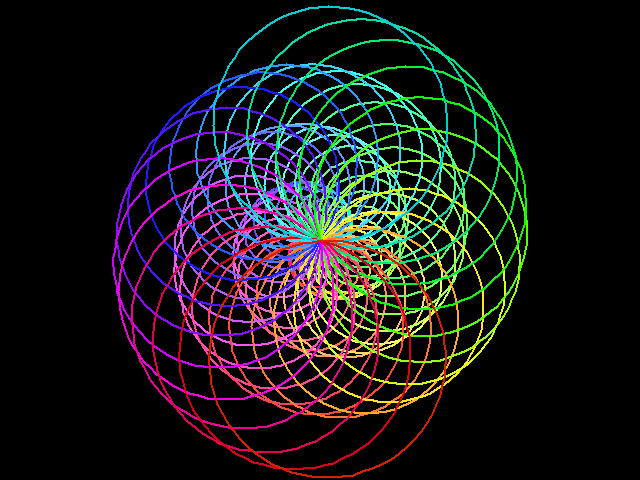
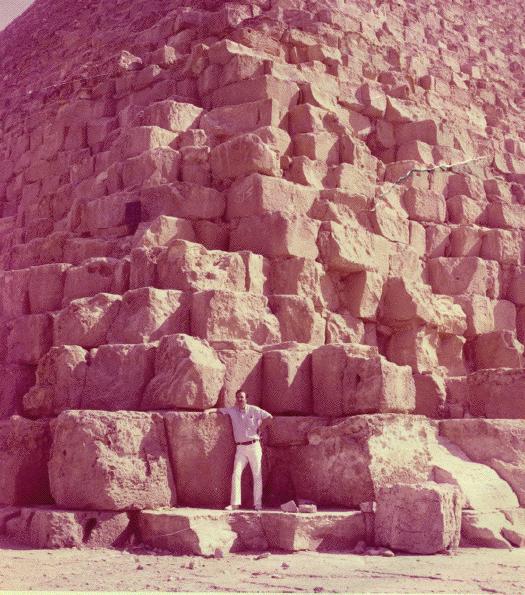
Your Email is welcome
Lambert Dolphin's Place
900+ Recent and Recovered Articles. Free.
Newsletters Old and New
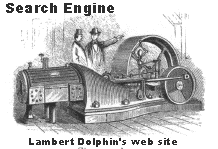
First written, October 7, 1992, revised June 14, 1994, August
28, 1996, October 9, 1999, January 11, 2001. March 6, 2003. July 22, 2020. February 10, 2021.
April 2, 2021. October 10, 2022. December 20, 2022. February 2023. November 9, 2023. November 27, 2023. November
29, 2023.


 y God. A boundary, here called a "firmament," is established in the midst of the previously undivided "waters" (plural). The Hebrew word raqiya means "to stretch out"---as one stretches out a tent. There is a wide range of opinion about what this term does or does not mean. Traditional commentators have suggested that God moved the boundary zone He had placed in the waters, expanding some of the waters out to the vast reaches of space. In doing this, some of the waters could easily have ended up in the lowest level of the heavens, namely in the upper atmosphere, to form a vapor canopy---which is thought to have collapsed at the time of the Flood. Much of the primeval water could have been pushed out to the outer boundaries of the universe. Our English word "heaven" is from the verb "to heave" which preserves the concept of an original expansion of the universe early on in creation week.
y God. A boundary, here called a "firmament," is established in the midst of the previously undivided "waters" (plural). The Hebrew word raqiya means "to stretch out"---as one stretches out a tent. There is a wide range of opinion about what this term does or does not mean. Traditional commentators have suggested that God moved the boundary zone He had placed in the waters, expanding some of the waters out to the vast reaches of space. In doing this, some of the waters could easily have ended up in the lowest level of the heavens, namely in the upper atmosphere, to form a vapor canopy---which is thought to have collapsed at the time of the Flood. Much of the primeval water could have been pushed out to the outer boundaries of the universe. Our English word "heaven" is from the verb "to heave" which preserves the concept of an original expansion of the universe early on in creation week.


 At the end of Day One space, time, matter, and energy had been
brought into existence as amorphous raw materials out of which
a finished universe would be sculpted and formed during the five
days which were to follow. The ancient Greeks thought the four
building blocks of the universe were air, earth, fire and water.
Four is the Biblical number for the world---the Greeks weren't
too far from being on the right track if we compare air/space,
fire/energy, and earth/matter. They missed the "element"
of time as a building material for the construction of the universe.
At the end of Day One space, time, matter, and energy had been
brought into existence as amorphous raw materials out of which
a finished universe would be sculpted and formed during the five
days which were to follow. The ancient Greeks thought the four
building blocks of the universe were air, earth, fire and water.
Four is the Biblical number for the world---the Greeks weren't
too far from being on the right track if we compare air/space,
fire/energy, and earth/matter. They missed the "element"
of time as a building material for the construction of the universe.
 The Bible emphasizes that the universe was created in six days.
"for in six days the LORD made heaven and earth, the sea,
and all that is in them, and rested the seventh day; therefore
the LORD blessed the sabbath day and hallowed it. " (Exodus
20:11) The Hebrew word for an ordinary 24-hour day, yom, is
used. Endless and often futile debates have raged over whether
or not the seven days of Creation Week were literal 24-hour days
or long periods of time.
The Bible emphasizes that the universe was created in six days.
"for in six days the LORD made heaven and earth, the sea,
and all that is in them, and rested the seventh day; therefore
the LORD blessed the sabbath day and hallowed it. " (Exodus
20:11) The Hebrew word for an ordinary 24-hour day, yom, is
used. Endless and often futile debates have raged over whether
or not the seven days of Creation Week were literal 24-hour days
or long periods of time. 



 The calendars and clocks used in the Bible for recording historical
events are all based on the dynamical time system:
The calendars and clocks used in the Bible for recording historical
events are all based on the dynamical time system:


 When the structural framework of the house is completed siding
and shingles are added to the outside and interior walls, partitions,
doors, floors and utilities are put into place.
When the structural framework of the house is completed siding
and shingles are added to the outside and interior walls, partitions,
doors, floors and utilities are put into place.

 God is the observer in Genesis Chapter One, so we must take his
word for the order of events during creation week. For instance,
He tells us that the length of each of the six created modules,
or days, (yom) is what we now know as a standard 24 hour
day. That is, our present cycle of 7, 24-hour days per week is
stamped from the template of the seven days of creation. The clock
appointed by God to keeping time for us was not set in operation
until Day Four, however (Genesis 1:17,18). Dynamical time is determined
by the motion of the sun moon and stars, i.e., by Newton's Law
of Gravity and Kepler's Laws of motion. The clock run rate for
dynamical time was established by the fundamental design of the
physical universe. The other common scientific standard of time
measurement is atomic time. Dynamical time and atomic time were
originally locked in step with one another, but the Fall
has apparently brought about a slowing down of atomic time clocks
with respect to dynamical time. Time has other dimensions as well,
for instance there is a different flow of time in the spiritual
world. In short, time is actually multi-dimensional (even more
than Einstein suspected) and we poor fallen creatures are at present
very much trapped in a very restricted time frame. Our modern scientific speculations about creation week may be compared to a boy looking through a knot hole in the fence of an immense construction site.
God is the observer in Genesis Chapter One, so we must take his
word for the order of events during creation week. For instance,
He tells us that the length of each of the six created modules,
or days, (yom) is what we now know as a standard 24 hour
day. That is, our present cycle of 7, 24-hour days per week is
stamped from the template of the seven days of creation. The clock
appointed by God to keeping time for us was not set in operation
until Day Four, however (Genesis 1:17,18). Dynamical time is determined
by the motion of the sun moon and stars, i.e., by Newton's Law
of Gravity and Kepler's Laws of motion. The clock run rate for
dynamical time was established by the fundamental design of the
physical universe. The other common scientific standard of time
measurement is atomic time. Dynamical time and atomic time were
originally locked in step with one another, but the Fall
has apparently brought about a slowing down of atomic time clocks
with respect to dynamical time. Time has other dimensions as well,
for instance there is a different flow of time in the spiritual
world. In short, time is actually multi-dimensional (even more
than Einstein suspected) and we poor fallen creatures are at present
very much trapped in a very restricted time frame. Our modern scientific speculations about creation week may be compared to a boy looking through a knot hole in the fence of an immense construction site. The warning to us from the Apostle Peter in his second epistle (3:3ff) tells us we must think of the ordinary,
present-day laws of physics as being inappropriate for describing creation week. An analogy might be the
construction of an aircraft. The aircraft, as a finished flying machine, can not be described until
it takes off on its maiden flight. After the designers' plans leave the drawing board,
aircraft components and modules--engines, fuselage sections, landing gear, seats,
instruments, etc.--are all ordered from subcontractors and brought to an assembly plant
where they are fitted together along an assembly line. Though we can understand each step of
the creative process our understanding of the aircraft as a unified system does not begin until the aircraft starts to fly.
The training and experience of the flight crew is another matter. Without them it's "no fly" for very expensive plane.
The warning to us from the Apostle Peter in his second epistle (3:3ff) tells us we must think of the ordinary,
present-day laws of physics as being inappropriate for describing creation week. An analogy might be the
construction of an aircraft. The aircraft, as a finished flying machine, can not be described until
it takes off on its maiden flight. After the designers' plans leave the drawing board,
aircraft components and modules--engines, fuselage sections, landing gear, seats,
instruments, etc.--are all ordered from subcontractors and brought to an assembly plant
where they are fitted together along an assembly line. Though we can understand each step of
the creative process our understanding of the aircraft as a unified system does not begin until the aircraft starts to fly.
The training and experience of the flight crew is another matter. Without them it's "no fly" for very expensive plane.






